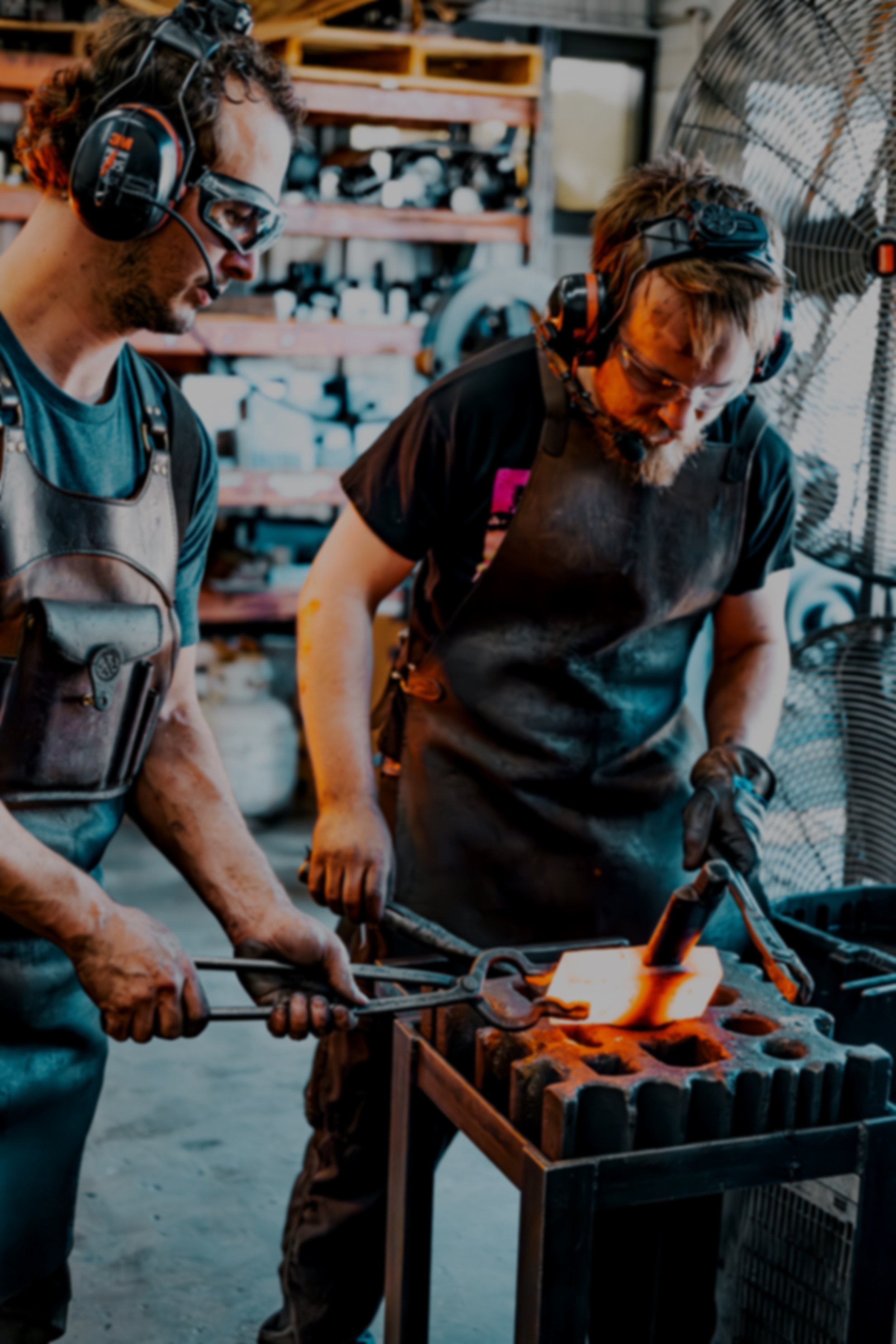
“Hoffman Blacksmithing was created purely from the passion for forging and the fascination of the thousands-year-old blacksmithing process. The old techniques of hand forging are held dear to me and are one of the fundamental building blocks of our manufacturing philosophy. A Hoffman axe is not only defined by its design; the process of making a Hoffman axe is a definitive quality of our product.”
— Liam Hoffman

The axe begins as a rectangular billet of steel heated in a forge to 2100 degrees Fahrenheit, causing an amazing transformation of malleability. The old saying "strike while the iron is hot" can never be truer here, as this is our opportunity to mold and shape the steel material, which now has properties that resemble clay. We use traditional forging techniques on early 1900s-era power hammers to artfully form an axe head
The axe head is forged to shape as closely as possible before final grinding is needed to bring our axe to spec and prepare it for hardening. Our axes are forged from a chromium molybdenum alloy that quenches in oil at a temperature of 1575 degrees Fahrenheit. One distinctive feature of a Hoffman axe is its hardened poll
A beautiful aspect of axe making is the mix of woodworking and metalworking skills needed throughout the process. The wood shop is next, where we take rough-sawn hickory lumber and transform it into the second most crucial part of the axe. Grading the lumber and choosing the material's best qualities is paramount to a good handle's workings. Our handles are created in-house and based on historical designs from the late 1800s; we lean on the knowledge acquired when people used axes to make a living. Once the lumber is graded and cut into a handle blank, it's turned on a manual copy lathe, the same type of machine used over a hundred years ago to produce handles for our country's thriving logging industry.
Sending an axe out without a way to protect both the customer and the axe would be an injustice to the craftsmanship we have invested into the axe so far; that is why all of our axes get paired with a premium leather sheath. Each sheath is custom fitted to each unique axe and assembled with barge cement and Chicago screws.
The last step to finishing a Hoffman axe is the meticulous cleaning and inspection that each axe goes through before it's sealed up in a box and sent across the world. Our shipping team works hard to ensure the presentation of your axe is on point upon arrival by trimming away small burs on the handle, buffing off any oxidation on the steel, applying conditioner to the handle to make it pop, and adding a layer of oil to the head for preservation.






